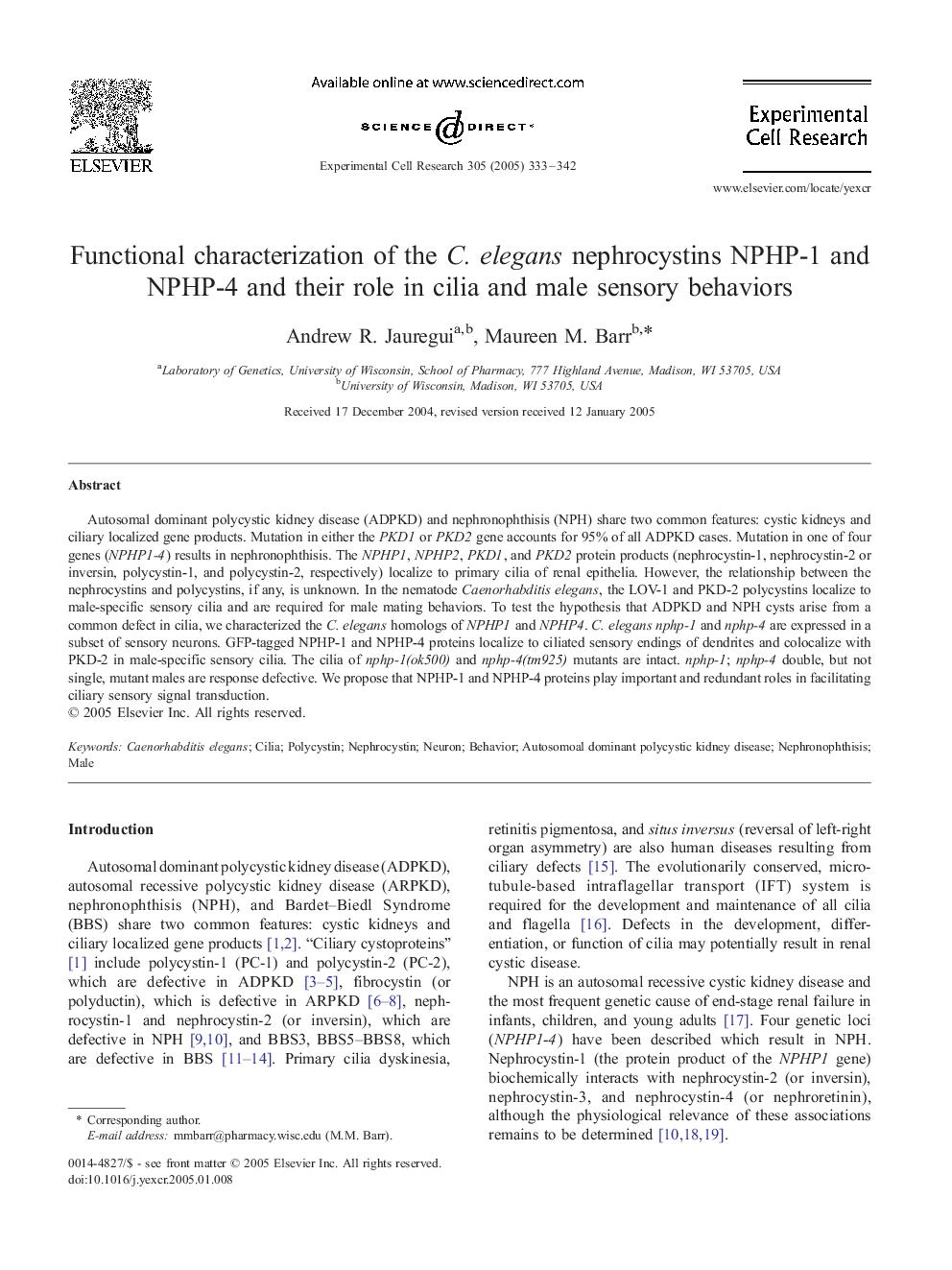| کد مقاله | کد نشریه | سال انتشار | مقاله انگلیسی | نسخه تمام متن |
|---|---|---|---|---|
| 10905333 | 1086746 | 2005 | 10 صفحه PDF | دانلود رایگان |
عنوان انگلیسی مقاله ISI
Functional characterization of the C. elegans nephrocystins NPHP-1 and NPHP-4 and their role in cilia and male sensory behaviors
دانلود مقاله + سفارش ترجمه
دانلود مقاله ISI انگلیسی
رایگان برای ایرانیان
کلمات کلیدی
موضوعات مرتبط
علوم زیستی و بیوفناوری
بیوشیمی، ژنتیک و زیست شناسی مولکولی
تحقیقات سرطان
پیش نمایش صفحه اول مقاله

چکیده انگلیسی
Autosomal dominant polycystic kidney disease (ADPKD) and nephronophthisis (NPH) share two common features: cystic kidneys and ciliary localized gene products. Mutation in either the PKD1 or PKD2 gene accounts for 95% of all ADPKD cases. Mutation in one of four genes (NPHP1-4) results in nephronophthisis. The NPHP1, NPHP2, PKD1, and PKD2 protein products (nephrocystin-1, nephrocystin-2 or inversin, polycystin-1, and polycystin-2, respectively) localize to primary cilia of renal epithelia. However, the relationship between the nephrocystins and polycystins, if any, is unknown. In the nematode Caenorhabditis elegans, the LOV-1 and PKD-2 polycystins localize to male-specific sensory cilia and are required for male mating behaviors. To test the hypothesis that ADPKD and NPH cysts arise from a common defect in cilia, we characterized the C. elegans homologs of NPHP1 and NPHP4. C. elegans nphp-1 and nphp-4 are expressed in a subset of sensory neurons. GFP-tagged NPHP-1 and NPHP-4 proteins localize to ciliated sensory endings of dendrites and colocalize with PKD-2 in male-specific sensory cilia. The cilia of nphp-1(ok500) and nphp-4(tm925) mutants are intact. nphp-1; nphp-4 double, but not single, mutant males are response defective. We propose that NPHP-1 and NPHP-4 proteins play important and redundant roles in facilitating ciliary sensory signal transduction.
ناشر
Database: Elsevier - ScienceDirect (ساینس دایرکت)
Journal: Experimental Cell Research - Volume 305, Issue 2, 1 May 2005, Pages 333-342
Journal: Experimental Cell Research - Volume 305, Issue 2, 1 May 2005, Pages 333-342
نویسندگان
Andrew R. Jauregui, Maureen M. Barr,